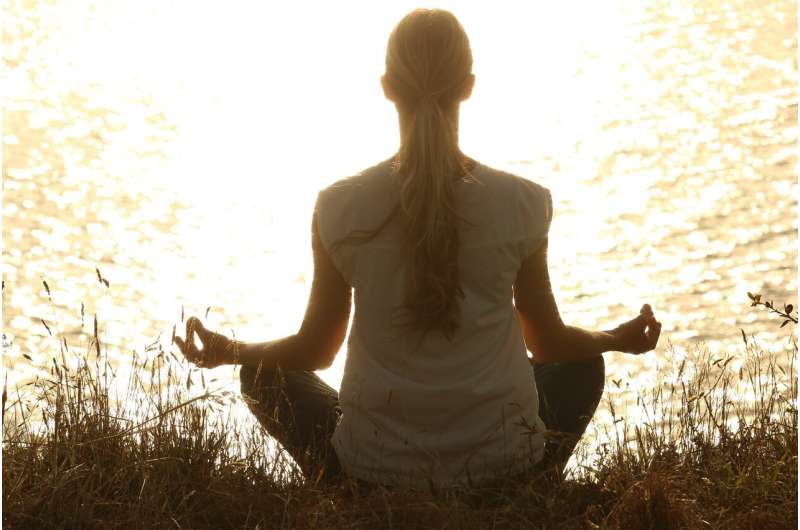
DEAR MAYO CLINIC: I am a mother of two, work full time and am also a breast cancer survivor. I know physical exercise is important, so I try to visit the gym a few times a week for weight training and to walk. A friend recently invited me to a yoga class. I have never thought about adding yoga to my fitness routine. What are the benefits, and how would I get started?
ANSWER: Yoga is a wonderful form of exercise that provides benefits that walking and strength training do not provide. In Eastern cultures, yoga is not seen as exercise, but rather “a moving meditation.” In the Western world, many people know power yoga or vinyasa yoga, which are classified as exercise.
Regardless of the type, the practice of yoga brings together physical and mental disciplines that may help you achieve peacefulness of body and mind, relax, and manage the stress and anxiety associated with being a busy mom and living with cancer.
Yoga can provide three primary benefits that a typical gym routine may not provide: improved nervous system function, improved joint range of motion and improved dynamic balance.
Improved nervous system function
Since yoga is based on breathing, parts of the nervous system are affected when you lengthen the amount of time you exhale, and control your breathing. This is cued throughout particular yoga sequences. Specifically, yoga can help lower the fight-or-flight response and improve the body’s “rest-and-digest” response.
Practicing slow, controlled breathing stimulates the body’s vagus nerve, which takes information about the current state of relaxation and relays it to the rest of the body, including the brain. One area affected when the vagal nerve is stimulated is the parasympathic nervous system, which controls the body’s rest and digestion functions.
The mindful breathing practiced in yoga increases the activity of the parasympathic nervous system. As a result, yoga lowers the heart rate, improves digestion and quality of sleep, and strengthens the immune system. Another benefit is reduced stress.
Improved joint range of motion
The difference between flexibility and active range of motion is important. Think of flexibility as how much a muscle can be passively stretched. In contrast, range of motion is how much muscles can be used to control a joint’s movement.
It is not uncommon these days for people to report neck and back pain, and poor range of motion in their thoracic spine due to constant sitting, typing on computers and looking down at cellphones. Yoga is excellent in improving thoracic range of motion because many poses involve extending the body through the rib cage and using strength to hold these postures.
Yoga incorporates all four motions of the spine: flexion, extension, rotation and side-bending. Therefore, yoga can prevent stiffness and disuse that also can occur with age. Being able to control the available range of motion in joints is crucial to good posture and decreasing the risk of injury.
Improved dynamic balance
Think of balance like a muscle. By working hard at different exercises, balance can improve. This is similar to improved strength by lifting weights.
Balance is a complex system, requiring three parts: the sensation of the foot on the ground, or proprioception; vision; and the inner ear, or vestibular system. These three parts tell the brain where the head is in space. These three components work together to control both static and dynamic balance.
Yoga trains the proprioception and visual systems to improve balance. Depending on the pose, cues are sent to focus, for instance, on the foot rooted to the ground. By concentrating in an attempt to maintain contact, the big toe, little toe and heel form a tripod of sorts, which in turn helps focus the proprioception portion of balance.
In yoga, you may hear the term “drishti,” which refers to obtaining a focused gaze or focus in the mind. The concept comes into play as people aim to hold a pose with their eyes closed. Certain poses become more challenging with eyes closed, which improves the visual part of balance.
Also, moving back and forth between poses without fully touching a limb to the ground can increase the ability to dynamically move and not lose balance. Over time, this will reduce the risk of falling while walking on uneven ground or turning quickly.
Is yoga right for you?
If you choose to try yoga, go slow and try different kinds to find what works for you. Although you can learn yoga from books and videos, beginners usually find it helpful to learn with an instructor. Visiting a class with your friend may be more enjoyable in that it will offer support to you and time together, which is just as important to overall well-being as fitness.
When you find a class that sounds interesting, talk with the instructor so that you know what to expect. You may want to speak to the instructor in advance about expectations for the class. And remember, you don’t have to do every pose. If a pose is uncomfortable or you can’t hold it as long as the instructor requests, don’t do it. Good instructors will understand and encourage you to explore—but not exceed—your personal limits.
Source: Read Full Article
